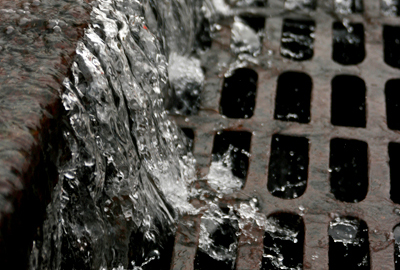Stormwater Sampling
EST is well equipped to support all weather contingent field services related to National Pollutant Discharge Elimination System (NPDES) permits. We have multiple public and private sector clients that rely on us to provide the most cost-effective and reliable stormwater sampling services available. Our staff has collected stormwater samples for NPDES permit compliance for a diverse client base throughout the Northeast including “first flush” and composite samples during qualifying events in accordance with EPA protocol. EST is also proficient in collecting both 24-hour and week long acute and chronic WET tests. Our clients include public agencies, municipalities, engineering consultants, and private industry throughout the region. In order to provide the most reliable services available, we have self-contained automatic sampling units that can be triggered based on flow or rainfall. These units can also be equipped with telemetry to alert sampling personnel when criteria for sample collection have been achieved.
Contact us today to request a quotation or learn more about EST’s stormwater sampling capabilities
Stormwater Sampling FAQs
How does the scheduling process work if I contract EST to perform my company's stormwater sampling?
Once EST has been contracted to conduct NPDES permit sampling, our clients are placed on an automatic monitoring schedule based on their specific stormwater monitoring requirements and monitoring schedule. EST then begins to track rainfall to identify qualifying stormwater monitoring events. Various resources are used for tracking stormwater events, including the National Weather Service, and other public and private weather monitoring services. When appropriate conditions are observed, we alert our field crews in order to mobilize in a timely manner. If the storm changes track or does not produce the requisite amount of rainfall required, the event will be cancelled and EST will begin tracking the next potential qualifying event.
Stomwater monitoring in the Northeast can be challenging since weather patterns can be unpredictable and the timing of “first flush” sample collection is influenced by several factors including the duration and intensity of rainfall, drainage structures, and impervious surface coverage on site. All of these factors must be considered as part of the planning process for an effective stormwater monitoring program. Often times, timely mobilization of field personnel is not safe or practical at certain sites. In these situations, automated stormwater sampling programs should be considered. These programs rely on rain gauges, water level actuators, and flowmeters which can be installed days, or weeks in advance of rainfall, and can be used to signal automatic samplers to initiate a sampling program when certain rainfall intensity or flowrates are measured. These stormwater monitoring systems can be equipped with wireless telemetry to alert EST project managers when a stormwater monitoring program has been initiated and when it has been successfully completed.
How and when does EST mobilize for a stormwater event?
Through decades of stormwater sampling experience, at hundreds of sites throughout the region, EST has developed reliable procedures to track qualifying stormwater events necessary to satisfy our clients NPDES sampling requirements. We use public and private weather services including our own network of telemetry equipped rain gauges to track weather patterns on a daily basis. When favorable conditions exist, our field staff receives text alerts and prepare to mobilize for sample collection. When timely mobilization to a project site is not practical, EST has an inventory of automatic samplers, flow meters, water level actuators, and rain gauges that can be installed and programmed in advance of rainfall to capture first flush samples or begin a composite sampling program prior to our arrival on site. These automated systems can also be equipped with telemetry to notify EST when a sampling program has been initiated and when it has been completed.
What is a “first flush” sample?
First flush samples are samples collected within the first thirty (30) minutes of rainfall discharge, where practical, but in no case later than the first hour of drainage.
What is a qualifying event?
In general, qualifying events are those resulting from a storm event that is greater than 0.1 inches in magnitude and that occurs at least seventy-two (72) hours from the previously measureable (greater than 0.1 inch rainfall) storm event.
What information is provided with a visual observation report?
When EST technicians conduct visual assessments of samples, the technician does so within the first 30 minutes after discharge. A field examination report is then completed containing the following information:
- Date of sample collection and of visual assessment
- Time of sample collection and of visual assessment
- Sample site identification
- Date of storm event
- Name and signature of sampling technician
- Incremental rainfall data and nature of discharge (i.e. runoff or snowmelt)
- Date and estimated time of end of last rain event
- Visual observations of samples (color, odor, clarity, floating solids, settled solids, suspended solids, foam, oily sheen, or other indicators of pollution) and probable sources of any observed pollutants.
- If applicable, why it was not possible to collect a sample within the first 30 minutes of discharge
In the event of unusual or significant observations based on EST’s judgement and experience, the client is notified by email or phone as soon as possible on the sample collection day.
What happens if EST mobilizes but is unsuccessful in collecting my samples due to unexpected changes in the weather?
EST will continue to monitor future rain events during the sample period and target additional opportunities until a sample can be obtained.

